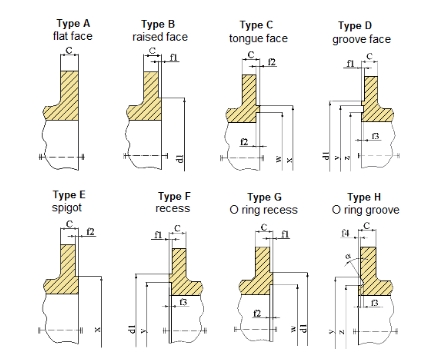eN Flange standard
Our company produces EN standard flanges.
EN standard flanges were developed by the European Committee for Standardization from PN2.5 to PN400, and the common types are plate flanges, weld neck flanges, blind plates, threaded flanges, and so on.


lewis Liu
sales Manager
EN Flange standard
EN1092-1 standard flanges are developed by the European Committee for Standardization from PN2.5 to PN400, common types are plate flanges, weld neck flanges, blind, threaded flanges, and so on.

What is the EN flange standard?
EN flange standard is a European flange standard system represented by the European Union, the origin of EN flange standard comes from the 20th century, when many countries have their own flange standard, such as Germany’s DIN flange standard, Britain’s BS flange standard, France’s NF flange standard, in order to better strengthen the trade of European countries, to realize the integration of, by the European Committee for In order to better strengthen the trade among European countries and realize the integration, the European Committee for Standardization took the lead in formulating the EN flange standard, which includes various flange specifications, dimensions, materials and other materials used in various industrial applications, which better guarantees the universality of the flanges and effectively protects the quality of the flanges, so that flanges produced by different manufacturers in different countries can be interchanged and intercommunicated, and promotes the process of the integration of the European industry.
EN standard flanges are mainly standardized as EN1092-1 and EN1759, covering from small low-pressure to large high-pressure pipelines. Common nominal pressure rating PN6-PN40, nominal diameter DN15-DN2000.
Below we provide you with a table of common technical parameters for EN flange standards:
| Parameter | Description |
| Pressure Rating | PN6,PN10,PN16,PN25,PN40 |
| Flange Size Range | DN15-DN2000 |
| Flange Type | 01Flat Flange, 02Flat Welding Flange with Neck, 03Flat Welding Flange with Neck, 04Flat Loose Sleeve Flange with Neck, 05Large Diameter Flat Flange, 06Large Diameter Flat Welding Flange with Neck, 07Large Diameter Flange with Neck Butt Welding Flange with Neck, 11Integral Flange, 12Flange Cover, 13Lining Flange, 14Flange Receiver, 15Personal Hole, 16Flange Shaft, 17Reducing Flange, 21Rotating Flange, 22Screwing Flange with Neck 23 Butt-welding ring loose flange, 24 Flat-welding ring loose flange, 25 Flap ring loose flange, 26 Butt-welding ring, 27 Flat-welding ring, 32 Blind plate, 33 Blind flange, 34 Stud ring, 35 Welded head, 36 Flat plate head, 37 Pressure ring. |
| Sealing surface | Flat Face(FF), Raised Face(RF), Male and Female Face(MF), Tongue and Groove Face(TG), Ring Joint Face(RJ) |
| Flange Material | Carbon Steel, Stainless Steel, Alloy Steel, etc. |
| Connection | Bolt, Weld, and Threaded Flange Surface treatment |
| Surface treatment | Anti-corrosion coating, painting, nickel plating or other coatings |
| Production process | Forging and casting |
| Inspection standard | Dimension and tolerance testing, surface quality testing, material testing, sealing testing, pressure testing, non-destructive testing, and more. |
| Marking | Marking of flanges with the manufacturer, size, pressure, dimensions, material steel number, etc. |
In addition to the European EN standard flange, what are the other common flange standards?
The following are common flange standards in addition to EN flange standards:
- American ASME/ANSI flange standards: ASME B16.5, ASME B16.47.
- China GB flange standards: GB/T 9112-2010, GB/T 9113-2010, GB/T 17241-2008, GB/T 17242-2008. 3.
- British BS flange standard: BS 4504. 4.
- Japan JIS flange standard: JIS B2220. 5.
- Germany DIN Industrial Flange Standard: DIN 2501. 6.
- Russian GOST Flange Standard: GOST 12820. 7.
- Australian Standard for AS Flanges: AS 1163. 8.
DIN flange standard is replaced by the EN flange standard?
DIN flange standard is earlier than the EN flange standard is developed and managed by the German national standardization organization DIN, and later for European industrial integration, the European Committee for Standardization organization developed the EN flange standard, which is represented by the European Union European flange standard system.
The DIN flange standard is mostly used in Germany, EN flange is mostly used in the European market. As more and more European markets use EN flanges, DIN flanges will indeed have to be replaced by EN flanges, there is no complete replacement, but the two coexist in the present situation.
If you want to use EN flanges to replace DIN flanges, you have to do a full assessment of the project, EN flanges, and DIN flanges are of different sizes and pressures, so we have to choose the right size and pressure according to the project, to make sure that the flanges selected are suitable for the project will not cause leakage.
What is the difference between the European EN standard flange and the American ASME/ANSI standard flange?
European EN standard flange and the United States ASME / ANSI standard flange mainly have the following differences:
First, the standard development organization and the main use of different regions:
EN standard flange developed by the European Committee for Standardization is mostly used in the EU market.
American Standard ASME/ANSI standard flange developed by the American Society of Mechanical Engineers and the American National Standards Institute, is mostly used in the North American market.
Second, the pressure level is different:
EN European standard flange pressure level for PN6, PN10, PN16, 25, PN40, and so on.
ASME/ANSI American standard flange pressure level for Class75, Class150, Class300, Class400, Class600, Class900, Class1500, Class2500, etc..
Third, different size standards
EN standard: the use of metric units, flange size is usually in millimeters (mm) for the unit.
ASME/ANSI standards: the use of imperial units, flange size is usually in inches (inch) for the unit.